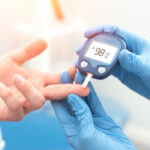Key takeaways:
- Myocardial Perfusion Imaging (MPI) and Echocardiogram (Echo) both assess heart health but answer slightly different questions.
- MPI evaluates blood flow to the heart muscle and can identify areas with poor circulation.
- Echocardiogram focuses on heart structure, pumping function, and valve health.
- Choosing the right test depends on your symptoms, health background, and your cardiologist’s assessment.
- Both tests help detect conditions such as coronary artery disease, heart failure, and valvular disorders.
Two tests, one goal: understanding your heart better
When it comes to checking how your heart is doing, two common tests often come up, Myocardial Perfusion Imaging (MPI) and the Echocardiogram (Echo).
Both are valuable, but they reveal different aspects of your heart. The echocardiogram shows how your heart looks and moves, while MPI shows how well blood flows to the heart muscle.
In simple terms, one shows the structure, the other shows the supply.
What an echocardiogram shows
An echocardiogram uses ultrasound waves to create moving images of your heart. It’s non-invasive and completely painless.
It helps assess:
- Heart chambers and valves – Are they working as they should?
- Pumping strength (ejection fraction) – How efficiently your heart pushes blood.
- Heart muscle thickness – Whether long-term high blood pressure has caused changes.
- Fluid or abnormalities – Such as pericardial effusion or valve leakage.
An echocardiogram is often the first step when you experience symptoms like chest tightness, breathlessness, or palpitations.
What myocardial perfusion imaging reveals
Myocardial Perfusion Imaging (MPI) looks at how well blood reaches your heart muscle, especially during stress or exercise.
It involves injecting a small amount of a safe tracer and taking images using a special camera. The tracer highlights areas of good and poor blood flow.
This test helps identify:
- Areas of reduced blood flow (ischemia)
- Heart muscle damage from a past heart attack
- Severity and extent of coronary artery disease
In short, while the echocardiogram tells you how your heart is moving, MPI tells you how well it’s being nourished.
Which test tells you more?
Neither test is “better”; it depends on what your doctor needs to know.
- If your cardiologist wants to assess heart structure and function, an echocardiogram is more useful.
- If the concern is blocked arteries or poor blood flow, MPI provides clearer insights.
- Sometimes, both are recommended to give a full picture; the Echo explains how the heart is performing, and MPI shows why there may be reduced performance.
Both results together help guide diagnosis and treatment, especially in cases of chest pain, unexplained fatigue, or suspected coronary artery disease.
What to expect during each test
Echocardiogram:
You’ll lie on a table while a technician applies gel and moves a handheld probe over your chest. The test takes about 30–45 minutes, with no downtime needed.
Myocardial Perfusion Imaging:
You’ll receive a tracer injection, and images will be taken before and after exercise or medication that mimics exertion. The full process takes a few hours, including waiting times between scans.
Both tests are safe, and you can usually resume daily activities afterwards.
When your cardiologist might suggest both
Sometimes, your doctor may recommend both tests, especially if symptoms continue despite normal results from one test.
For example:
- Your echocardiogram looks normal, but you still feel chest pressure during activity. MPI can detect subtle blood flow issues.
- Your MPI shows reduced blood supply, and the Echo can help evaluate how that area is affecting heart function.
Together, they provide complementary information for a more accurate diagnosis.
The bottom line
Both Myocardial Perfusion Imaging and Echocardiograms are key tools in heart evaluation, each answering a different question.
- Echo = How your heart works.
- MPI = How your heart is supplied.
Your cardiologist will recommend the right test (or both) based on your symptoms, health history, and previous results.
FAQs
1. Is Myocardial Perfusion Imaging (MPI) safe?
Yes. MPI uses a very small amount of radioactive tracer, which is generally safe and well-tolerated. The tracer leaves the body naturally within a short period.
2. Can an echocardiogram detect blocked arteries?
Not directly. An echocardiogram shows how well your heart is functioning, but it doesn’t measure blood flow in the coronary arteries. Tests like MPI or coronary angiography are better suited for that.
3. Which test is more accurate for diagnosing heart problems?
Both are accurate within their purpose. Echocardiograms are ideal for detecting structural or functional issues, while MPI is better at identifying reduced blood supply.
4. How do I know which test I need?
Your cardiologist will decide based on your symptoms, medical history, and previous test results. Sometimes, both are done for a complete evaluation.
5. Do I still need medication after these tests?
Yes. These tests help diagnose or monitor your condition but do not replace ongoing treatment. Your doctor may adjust medication based on the results.
Concerned about your heart health?
If you’re experiencing symptoms such as chest pain, fatigue, or shortness of breath, it’s important to seek early evaluation.
At The Heart Practice, we offer comprehensive heart assessments and guidance to help you understand your next steps.
📞 +65 6733 6811
📲 WhatsApp: +65 8926 0080
👉 Book an Appointment
📍 6 Napier Road #03-05, Gleneagles Medical Centre, Singapore











